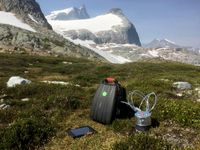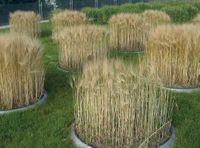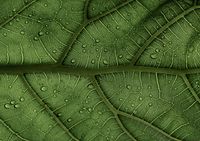SOIL, PLANT & AGRICULTURE SCIENCE
Soil science examines the composition of soil and the biological/physical/chemical processes that affect soil morphology. Plant science studies the sustainable production of high-quality crops, flowers and bio-based products.
Measuring fluxes of carbon dioxide, nitrous oxide, methane and water vapor, together with ecosystem variables, provide understanding of the processes behind energy and greenhouse gas exchange between the ecosystems and the atmosphere. VOC measurements allow researchers to study deposition and emission rates of biogenic volatile organic compounds (BVOC's). Isotopic measurements can be used to determine terrestrial sources and sinks of these greenhouse gases for improving predictive models and better understanding of the human contribution to global warming.
Soil flux measurements
Soil flux analysis is one of the most important key areas of soil science, in which the greenhouse gas exchange between soil and the atmosphere is measured. Flux measurements can be done by using a high frequency (10 Hz) GHG analyzer, i.c.m. with anemometer and datalogger, or using a chamber that is connected to a GHG analyzer in a closed loop configuration.
Examples include the measurement of greenhouse gas (or volatile organic compound) fluxes emitted from various types of soil, compounds released into soil by the roots of plants, uptake of compounds relevant to atmospheric chemistry in soil, volatile metabolites in the headspace of microbial cultures and determining the level of greenhouse gas emissions from landfills & sequestration sites.
Evapotranspiration
Evapotranspiration accounts for the movement of water from soil and plants to the air. Lysimeters can be used to measure water movement through soils, but also to learn more about the functioning and mechanisms of ecosystems. For the latter, additional sensors such as tensiometers, soil moisture probes, thermometers are required.
Using water isotope measurements (vapor in atmosphere, liquid in soil and plant) is another method to measure evapotranspiration. Leaf chambers can be used to study the exchange of carbon dioxide between a leaf and the atmosphere.
Ecology
Isotopes can be used as tracers of geochemical and biological processes in terrestrial systems, e.g. to study nitrification and denitrification processes of bacterial communities in soils and water.
For those who wants to examine forest respiration, carbon isotopic measurements can be used to validate photosynthesis processes. With the use of 13C-enriched substrates, it is even possible to study animal metabolic processes.
Agriculture & livestock
Soil traits and related agricultural activities may influence, or be influenced by, greenhouse gas concentrations. Livestock facilities are a crucial element in the supply chain of meat, however, odorous emissions from intensive livestock production can be a cause of nuisance in rural areas. Measuring greenhouse gases and VOC's from an agricultural field or originating from cattle, pigs, chicken or sheep, provides insights in plant/crop growth and/or good & safe living conditions.



